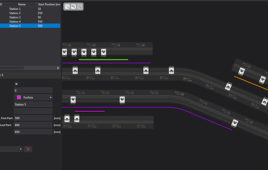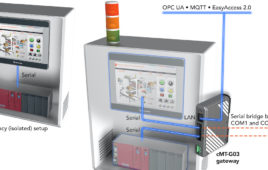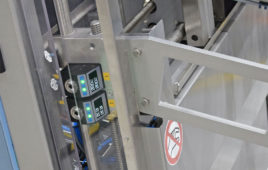While felines in space may be what you’re thinking, the Cloud-Aerosol Transport System (CATS) is a much more helpful accompaniment planned for the International Space Station. CATS will study the distribution of aerosols, the tiny particles that make up haze, dust, air pollutants, and smoke.
View: Photo of the Day: Space Station Debuts CATS Laser Technology
When Iceland’s Eyjafjallajökull volcano erupted nearly four years ago, for example, officials grounded flights in Europe because particles contained within its massive plume could damage aircraft engines, resulting in potentially deadly consequences for passengers. NASA couldn’t dispatch aircraft-borne instruments for the very same reasons European officials had grounded commercial aircraft. When the next volcano erupts, NASA will have a new tool in orbit that can monitor the spread of particles in Earth’s atmosphere from its space-based perch.
This Earth remote sensing instrument is scheduled to launch to the space station in September 2014 as a demonstration project. Its sensors will help researchers determine for the first time what state-of-the-art, three-wavelength laser technology can do from space to measure tiny airborne particles-also known as aerosols-in Earth’s atmosphere.
Developed by NASA’s Goddard Space Flight Center scientist Matt McGill, and his team, CATS will be able to see the character as well as vertical and horizontal distribution of aerosols in a whole new light. When CATS begins operations from its docking port on the Japanese Experiment Module-Exposed Facility (JEM-EF), the refrigerator-sized sensor will continue measuring atmospheric aerosols using the same two-laser wavelengths as NASA’s Cloud-Aerosol Lidar and Infrared Pathfinder Satellite Observations (CALIPSO) mission – the 1064 and 532 nanometer wavelengths.
Third Wavelength Added
What makes CATS stand out is the addition of a third laser wavelength at 355 nanometers. This will deliver more detailed information and could help scientists differentiate between the types of particles in the atmosphere. CATS is also equipped with extremely sensitive detectors capable of counting individual photons, delivering better resolution and finer-scale details.
“You get better data quality because you make fewer assumptions, and you get, presumably, a more accurate determination of what kind of particles you’re seeing in the atmosphere,” said McGill.
While CALIPSO can deliver 20 pulses of laser per second, using, as McGill described it, a whopping 110 milliJoules of energy in each of those pulses, CATS will fire 5,000 laser pulses per second, with only about 1 milliJoule for each pulse. The greatly simplified CATS power and thermal requirements are a huge plus for space-borne applications.
Earth Science from the Space Station
Knowing where aerosols are located in the atmosphere – such as smoke from forest fires, dust blowing off vast deserts, and plumes from erupting volcanoes – is often critically important. These particles can affect weather, climate, biogeochemistry, airplane safety, and human health.
The station travels in a precessing orbit, which means that instead of passing over the same spot at the same time, its orbit moves. The station’s ground track moves westward along each of 16 daily tracks as it travels, with ground track repeats every three days. As a result, CATS will provide good coverage of what’s happening over primary population centers.
In addition, the station passes over and along many of the primary aerosol-transport paths within Earth’s atmosphere. One of Earth’s primary transport routes for airborne pollutants is from Asia. Particles are transported by circulation cells in Earth’s atmosphere over Japan, northward up just under Alaska, and then down towards the West Coast of the United States, making a big, inverted “U” shape. Another atmospheric circulation cell moves aerosols from western Canada eastward and then southward, over the Great Lakes and the East Coast.
Because smoke-darkened skies over cities and communities can pose health risks to populations, especially to the medically vulnerable, the ability to track those aerosols and deliver warnings is critical. Long-term data also can reveal the shifts in global climate – whether changes are occurring in cloud cover or whether the level of pollutants is increasing or decreasing – over time and geographic location.
Lessons from the Test for the Next Quest
The demonstration flight also is technologically important, using the space station as a test bed. The third laser is in the ultraviolet wavelength, just outside the visible range. Though it adds an advanced capability, particularly when coupled with the new detectors, scientists believe it is susceptible to contamination. “If you get contamination on any of your outgoing optics, they can self-destruct, and then your system’s dead,” McGill said. “You end up with very limited instrument lifetime.”
Combating this risk to instruments is part of the CATS mission, showing how the equipment will fare in the space environment over time. “[The space station] is a good, relatively low-cost, quick way to do that,” said McGill. “In our current budget-constrained environment, we need to use what we already have, such as the [station], to do more with less.”
If the CATS instrument succeeds and operates well in space, it can be scaled up to be a stand-alone satellite payload or ‘free-flier’ mission. “One of the most exciting things for me has been the opportunity to develop a small, low-cost, quick-turnaround payload for the [space station], a pathfinder project representing what’s possible for future technology investigations,” said McGill. “We did this using a small team, a streamlined process, and a build-to-cost mentality – and we proved it can be done.”
NASA monitors Earth’s vital signs from land, air and space with a fleet of satellites and ambitious airborne and ground-based observation campaigns. NASA develops new ways to observe and study Earth’s interconnected natural systems with long-term data records and computer analysis tools to better see how our planet is changing. The agency shares this unique knowledge with the global community and works with institutions in the United States and around the world that contribute to understanding and protecting our home planet.
For more information, visit http://www.nasa.gov/centers/johnson/home/
Filed Under: M2M (machine to machine)




